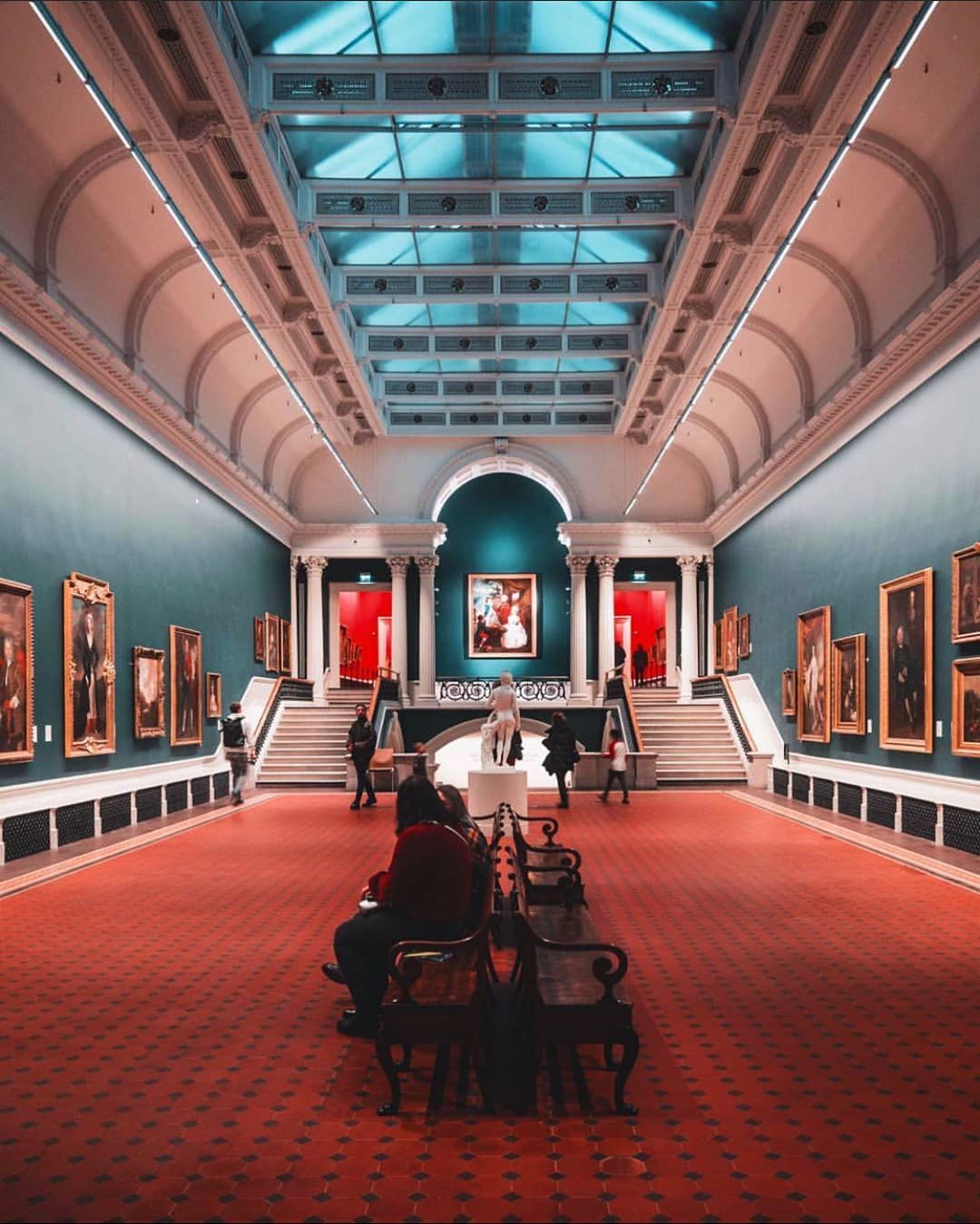Íomhánna na nGael, one of the first all-Irish language events at the National Gallery, was a virtual presentation that showcased works of Irish life. Presented by Caomhán Mac Con Iomaire, it happened entirely through Irish. The familiar set up; a Zoom call with a shared screen of the gallery’s paintings. While online classes, meetings, and events are now native drills for most people, the running of this event showed clear indications of the teething stages of Zoom, with unexpected unmuted microphones, screen sharing glitches, and awkward small talk. Not a major detriment to the event, yet with online formats, a degree of choreography is necessary to smooth the virtual blemishes of social interaction. For an event focused on learning and discussion a structured, conversational format would have added an extra layer of polish and ease, but the presentation prevailed without major hiccups.
The event celebrated the infamous visual depictions of Irish people through time we have in our gallery, including island-wide works that spanned centuries. It was an offering of snapshots; some morsels of history, and commentary varying greatly in style and subject. There were vast classical scenes of Ireland’s near mythic history, like The Marriage of Strongbow and Aoife by Daniel Maclise, the largest painting in the permanent collection. Works such as this were replete with tiny details, uncovered by the keenest of eyes. Then there were strikingly intimate portraits of ordinary Dublin families in the late 19th century, such as Walter Osborne’s In A Dublin Park, Light and Shade. The subject far from traditionally grand, and had an emotion-led commentary on the rights of poor people in urban Irish environments. The Yeats followed; wild, expressive, modernist works of colour and movement, animated and dazzling. This array of art presented its own diversity from the 19th to the 20th century, but did not present from the 21st.
A distinct benefit to this online presentation was how controlled it was. We are all currently soaked in images, with humans being exposed to more visual language than any other previous generation, and at a constantly accelerating rate. Therefore there is an unusual comfort to having to stop and consider an image. Historically, galleries were places to see a plethora of images, to be bombarded with art, especially in the case of French salons, where paintings were stacked high upon the walls. Even still in modern times, where there is a more considered structure and layout to gallery art, the idea has usually been to be a place to view a multitude of images, to attend something of a visual feast. However, the dominance of increasingly advanced digital technology means that we are constantly surrounded by images. We embellish our communication with GIFs and Emojis, take and send photos often on a daily basis, and are being advertised to from all sides at a profound rate. Our lives are overwhelmed by images. Oddly enough, the tables have turned so that galleries are places to slow our image consumption; places of highly curated, managed viewership. It is a strange release to be able to consider each painting carefully, getting background detail, historical context, shallow yet relevant information. Flicking through twenty or so images in an hour at a talk such as this would once have been something of luxury for its excess; now it seemed a luxury for its slowed, more restrained approach. .
As a portrait of Irish people in art through history, and as an event billed to celebrate the Irish language, Íomhánna na nGael was lacking in any sparkling insight and in an ultimate connection to contemporary Ireland. It might have been better served as a dialogue with the past rather than a brief, untethered visit. Inspiration is still very much possible in a forty-minute Zoom talk, even if scattered, and as a Zoom-like medium may be with us now forever to some degree, a bit of razzle-dazzle can actually be expected. However, as a chance to see some paintings in a pandemic, in a controlled, curated fashion, this event was also a gentle delight.
Surprisingly, the ultimate effect of this talk was quite similar to wandering in a physical gallery, in the sense that it teetered constantly between tranquil and tiresome. If nothing else, the presentation made me hungry to visit a gallery in person as soon as possible, as the joy of being made to stop and consider some visual art without distraction is almost totally absent from today’s digital world. More talks of this nature would certainly be welcome.






